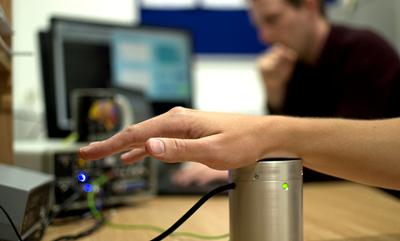Research project: Electro-haptic hearing: Using tactile stimulation to improve cochlear implant listening
Due to the limited amount of sound information that can be transmitted through a cochlear implant (CI), most CI users struggle to understand speech in noisy environments and have poor music perception. For information about this project please contact Dr Mark Fletcher (M.D.Fletcher@soton.ac.uk).
